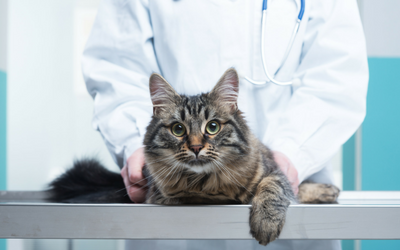Home | Dental Care | Pet Dental Care Guide
Pet Dental Care Guide
Keywords:
The 12-Steps to Professional Dental Cleaning
No other procedure performed on small animals does more to help patients than periodic teeth cleaning and aftercare. The dental visit for cleaning must be performed in a methodical manner. All twelve steps are important and interlinked. When one step is not performed, long-term patient benefit suffers.
Step 1 - Oral examination of the un-anesthetized animal. Begin with the face. Check for swellings and painful areas. Look at the eyes, are they the same size? Is there swelling under one eye? Open and close the mouth to check for pain or crepitus in the temporomandibular (TMJ) joints. Examine the teeth and gums for pathology. Examine each tooth rather than the mouth globally. If there is even a small amount of tartar touching the gingiva this is a disease and needs immediate removal.
Step 2 - Oral examination under general anesthesia. We examine individual teeth for mobility, fractures, malocclusion, and periodontal disease (probe for pocket depths after calculus is removed).
Featured Resources

We Welcome New Patients!
We're always happy to give your furry friend care at our hospital. Get in touch today!
Contact UsStep 3 - Supra-gingival (above the gum line) plaque and tartar removal using calculus removing forceps, hand instruments, and power scaling equipment. Supra-gingival deposits are removed from buccal, lingual, and between surfaces of the teeth. When used properly, the ultrasonic scaler removes plaque and tartar from the teeth. The heat generated by an ultrasonic scaler can cause severe damage to the tooth and periodontal support. Ultrasonic units must be used on crowns and exposed root surfaces only. The ability to remove tartar and potential damage by an ultrasonic scaler depend on power settings, time of exposure, amount of pressure applied, sharpness of the tip, and experience of the professional.
Step 4 - Regardless of the type of power scaler, use a feather-light touch, keeping the water-cooled tip moving in a constant sweeping motion to avoid thermal injury. Use the side of the tip not the point to remove tartar.
Step 5 - Sub-gingival (below the gum line) scaling, curettage. Curettes are used to remove sub-gingival deposits. Root scaling: removal of plaque and calculus from the root surface
The goal is to disorganize and lavage bacteria living sub-gingivally. This creates a healthier environment for healing and reattachment. Curettes or slim ultrasonic tips are used.
Sub-gingival Curettage is the removal of the gingival pocket’s diseased soft tissue inner surface. The rationale for the procedure is to convert chronically inflamed ulcerated lesions in the soft tissue wall of a periodontal pocket, into a clean surgical wound. This promotes healing and re-adaptation of tissue to the tooth surface.
Step 6 - Polishing. Regardless of how careful we are during the scaling/curettage phase of teeth cleaning, minor defects of the tooth surface occur. Polishing smoothes out the defects and removes plaque missed during previous steps. Polishing paste is used on a polishing cup for the procedure. When polishing, use firm pressure until the cup edge flares. Overheating is prevented by relieving pressure slightly as the cup moves over each tooth. Step 7 - Irrigation. With irrigation, diseased tissue and plaque are removed from the pocket or sulcus. Water spray and/or a 0.1-0.2% Chlorhexidine gluconate solution are commonly used.
Step 8 - Fluoride is placed on dry teeth and allowed to remain undisturbed for at least four minutes.
Step 9 - Post cleaning examination and diagnostics. After cleaning, teeth are examined individually via periodontal probing, compressed air applied to the gingiva to examine for retained calculus, Shepherd’s hook exploration, and radiology (if indicated).
Step 10 - Charting. Record disease present before therapy. Charting must include missing, loose, fractured, and discolored teeth, as well as feline oral resorptive lesions, periodontal pocket depths, gingival recession, and other significant lesions.
Step 11 - Therapy to treat lesions noted above. After treatment records must include: Dental care performed, follow-up recommendations, antibiotics dispensed, and home care instructions.
Step 12 - Home care instructions. The pet owner is an integral part of our pet health dental care team. The dental visit is not complete until a discussion is held on maintaining and improving oral health. Home care is the single most important procedure the owner can do to maintain oral health. If performed regularly, daily brushing will dramatically increase the interval between teeth cleaning appointments.
Follow-up progress visits are as essential
The time between oral exams is based on the degree of disease and the client’s ability to provide home care. Some severe periodontal cases are rechecked monthly, while pets that have been treated for grade one gingivitis, and their teeth brushed once or twice daily, can be rechecked every six months.
Featured Resources

We Welcome New Patients!
We're always happy to give your furry friend care at our hospital. Get in touch today!
Contact UsTips and Advice From Our Team
Looking for advice about caring for your pet? Our blog features helpful tips and educational material from our team to support your needs.



